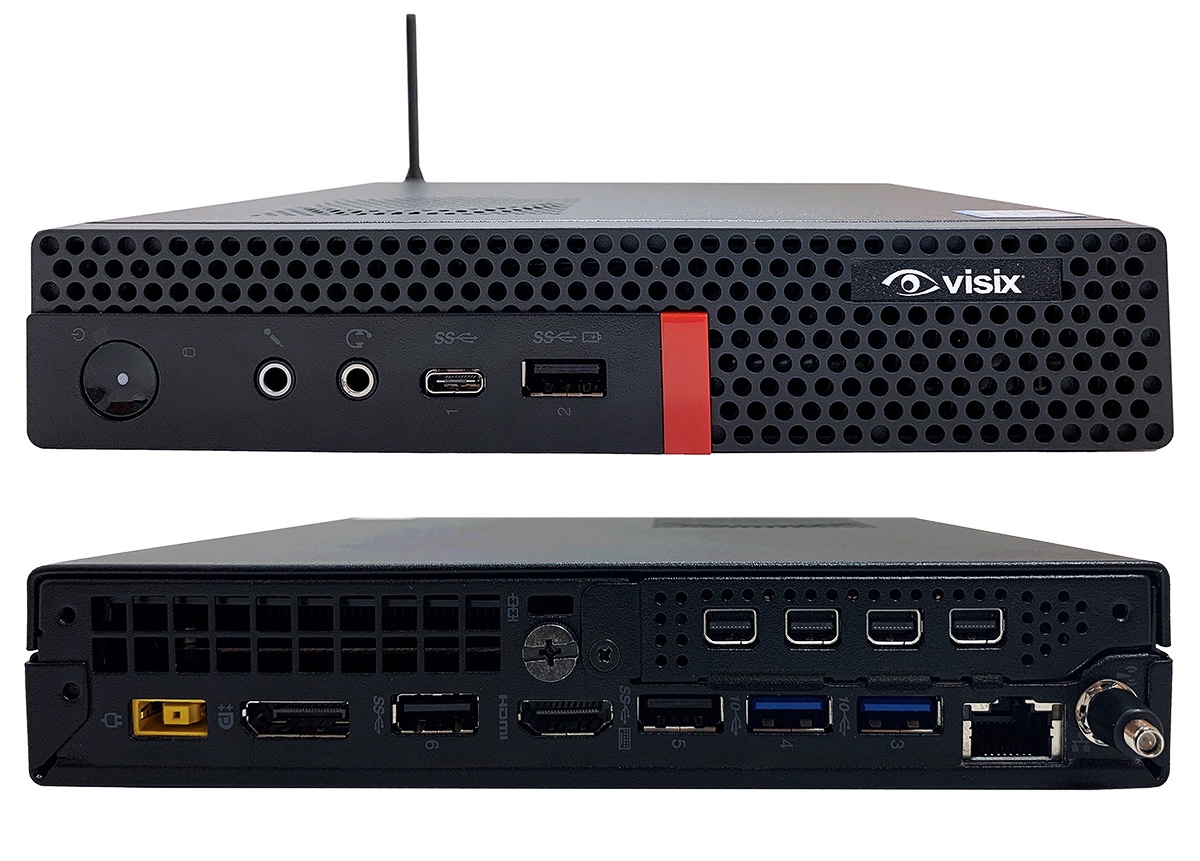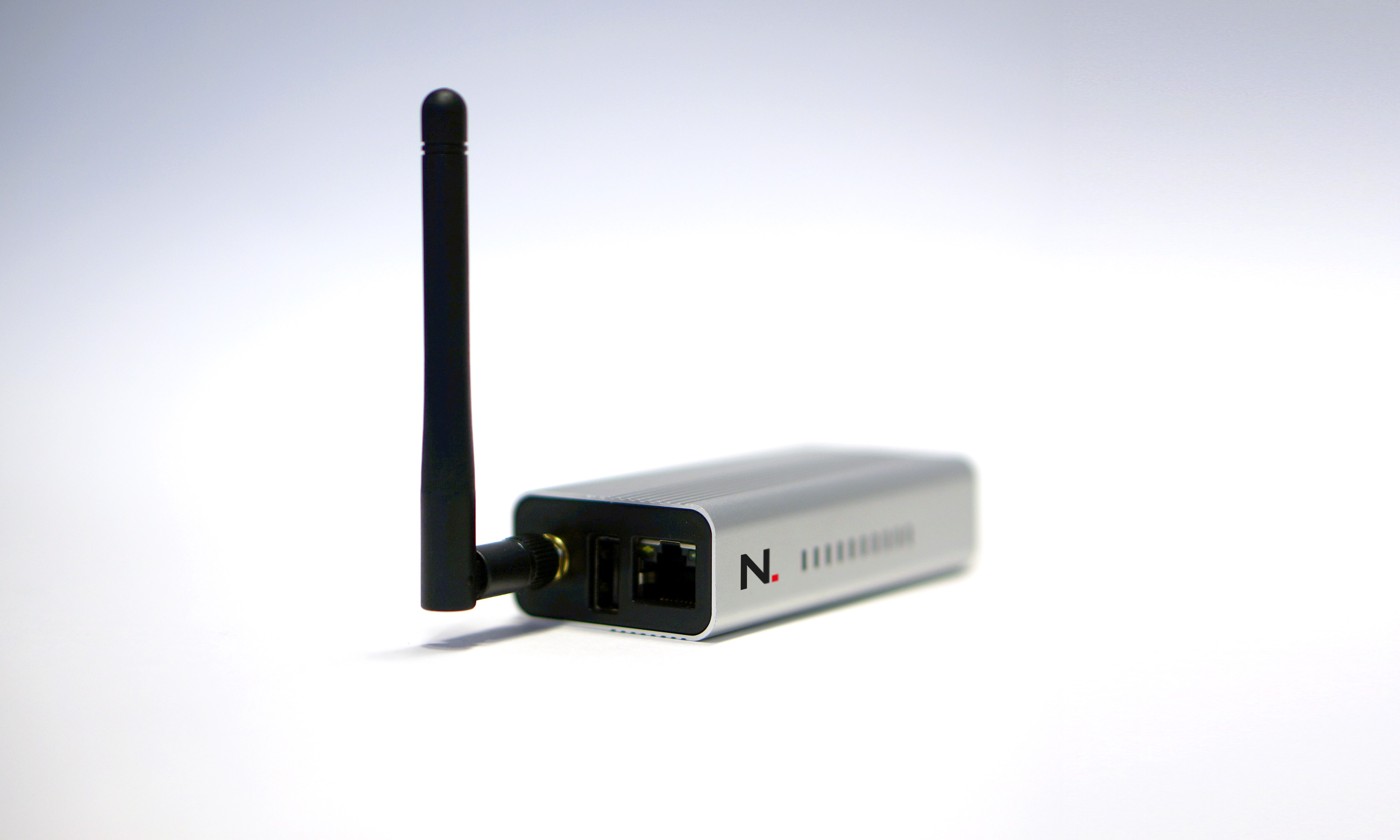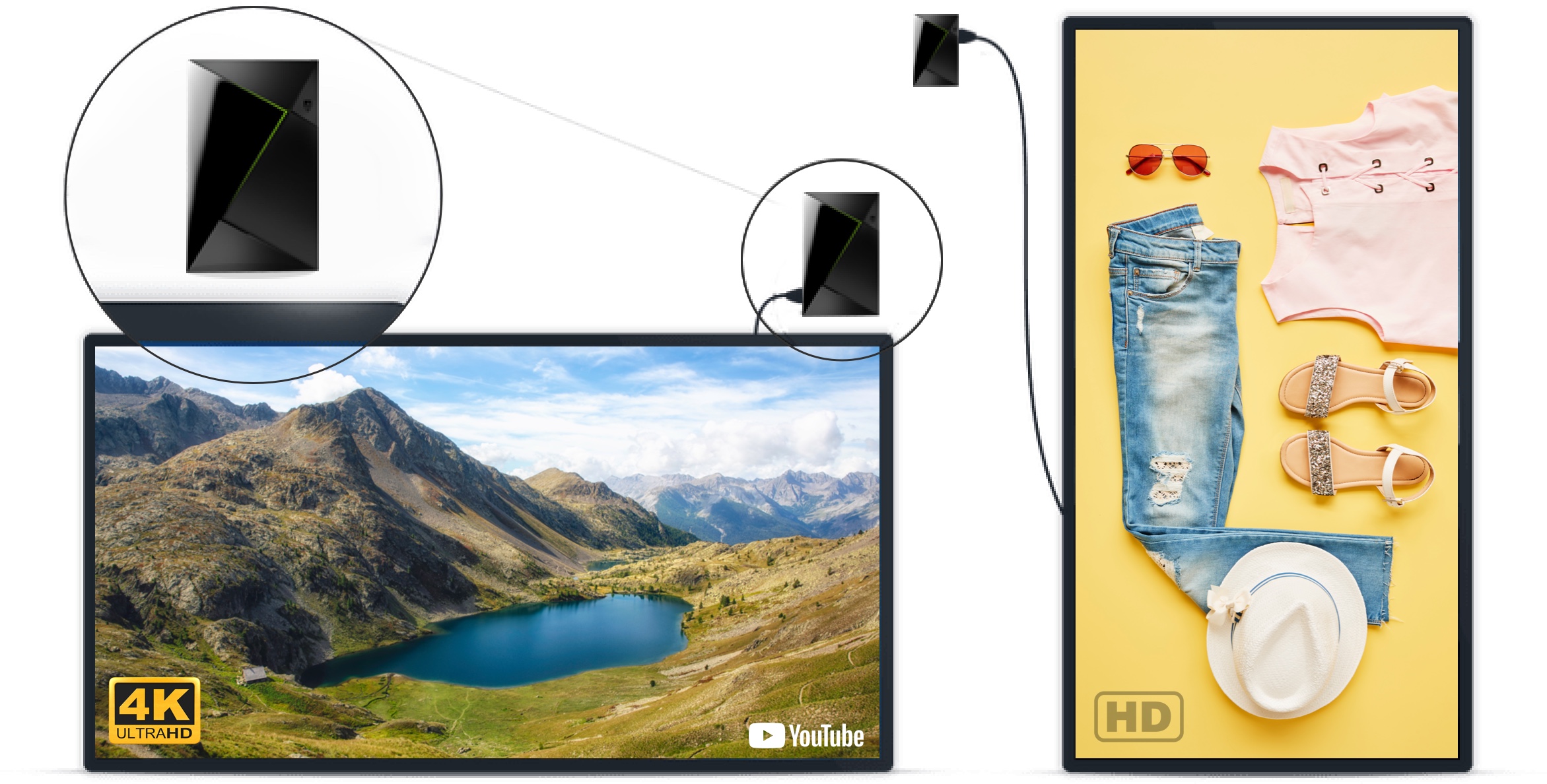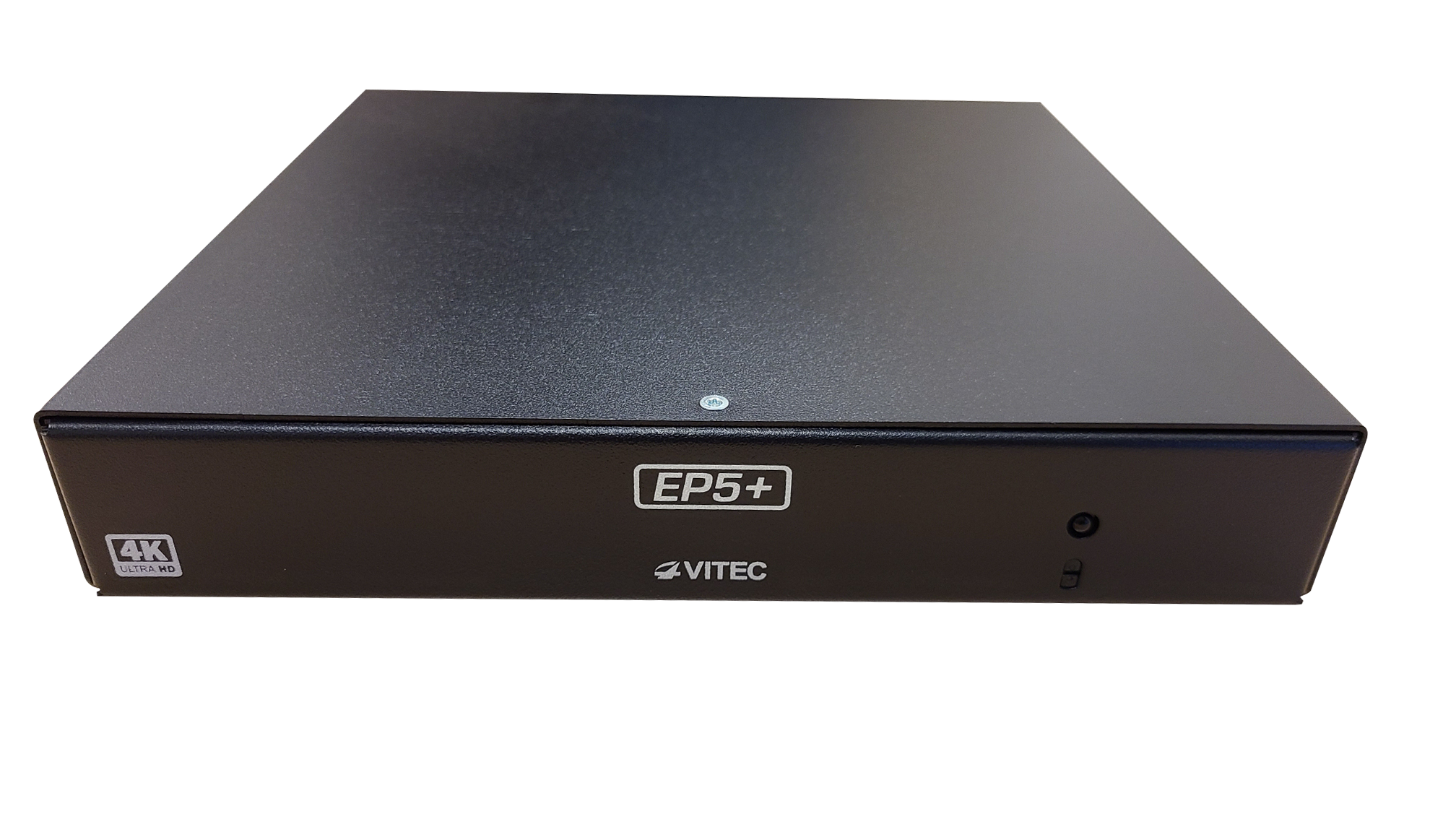In the new socially distanced public spaces of the pandemic era, digital signage has never been more vital. Building owners need to communicate procedures and protocols, business information must be shared with employees, and perhaps—in a glimmer of hope—the display of inspiring, vibrant imagery across large-scale, dynamic displays can revitalize the experience of a space.
[The Digital Signage Best Practices Guide]
To ensure that these many displays render imagery in seamless and dazzling ways, media players are evolving to meet new needs. Higher-resolution, touchless interaction and remote operation are key elements to the product evolution, and creative expression is also getting a boost. More robust and flexible external media players enable a wide array of visual updates and architectural media implementations. So look forward to having better experiences as the built environment becomes more animated with pixels and motion.
Visix
Responding to the continued proliferation of video walls across more applications, along with pandemic-related shifts in the way content is shared, Visix added a four-output media player to its lineup and fast-tracked a number of new features. Responding to customer feedback, Visix made the new player easier to set up and more powerful, standardizing its multioutput player lineup on Nvidia Pascal GPUs. The new model has 8 GB of memory, 256 GB SSD storage, built-in wireless, and a Windows 10 IoT Enterprise OS.

The extra capability boost from the Nvidia Quadro P620 reflects a trend toward more robust requirements for media players, which are being asked to handle increasingly complex content tasks. As content creation responsibilities shift to creative agencies and branding teams, designers are asking for more from the technology.
“I love seeing the incredible eye-catching displays that creative people come up with,” said Joe Murray, systems engineer with Visix. Not only are they pushing the bounds with 4K and 8K video content, they’re finding ways to integrate the visuals and the video walls themselves with the architecture in a space. “They’ll actually integrate these giant LED video walls directly into [building] walls as if it’s a piece of the architecture itself. That’s really great because when you design video walls with the architecture in mind, everything is just a little more seamless.”
Of course, many of those video walls are operating in empty offices at the moment, which prompted users to seek ways to use their digital signage systems to deliver messages via other means. Accordingly, Visix integrated web publishing into its flagship AxisTV Signage Suite, allowing signage content to be tied into a web page or broadcast across messaging apps such as Microsoft Teams or Slack.
Meanwhile, another engineering project was fast-tracked in the interaction department, as “touchless everything” became the demand from users. Visix released a voice recognition widget that enables users to plug a microphone into one of its players and control signage with spoken commands. “The display is still interactive, but users don’t have to touch anything,” Murray explained. Now interactive functions like wayfinding can be handled via voice, and directions can even be sent via text to a user’s mobile phone.
Navori
As is the case across most aspects of video, the demand for 4K and 8K is driving innovation, and within digital signage, that is where external media players shine. External media players provide vital flexibility and processing power for the most demanding applications, explained Jérôme Moeri, CEO of Navori: “For true 4K playback, an external media player is still required.” And demand for 4K will continue to grow, he noted: “Especially in the luxury industry, where the picture and the product matters, 4K will become a requirement within the next five years.”

But external media players don’t have to be a clunky add-on to projects. The diminutive Navori Stix 3500 packs a lot of power. Smaller than a mobile phone, the purpose-built device runs native applications for optimal rendering quality, “so they are eight times more powerful than web applications,” Moeri added.
With 4K soon to be essential to many projects, Navori is planning to release the Stix 3700 in May 2021, and that model will play natively in 4K.
But beyond resolution, it’s important to consider frame rate when seeking the highest-quality rendering. External media players such as Navori’s and others are capable of rendering content at 60 frames per second, where current system-on-chip [SOC] players are limited to 25 frames per second. “When you have slow motion on screen, object motion or special effects, the difference is it is very easily visible” at lower frame rates, Moeri noted.
Other perks to purpose-built external media players such as Stix are the adoption of an ARM CPU, which helps not only in better delivery of dynamic graphic content, but also in lower power consumption than a PC or larger player. And with its experience in the luxury market, Navori has also developed specialized color mapping to match the actual color of high-end imagery in its truest representation. “We have a better control on the color and the outcome,” Moeri said. “We have developed some settings especially for the luxury industry where they can choose a color calibration and control it remotely.”
Enplug
Addressing all the visual and technical requirements that combine to make the most memorable visual impression, Enplug’s digital signage player seamlessly drives content to any digital signage endpoint within the Enplug ecosystem. The player is tested against industry standards, offering broad compatibility and 4K support. Enplug users can quickly connect the player to any HD display in portrait or landscape orientation to deliver content with 1080p and 4K video playback at 60 frames per second. Content is updated via Wi-Fi or Ethernet and stored locally on the device, which means screens will never go down, even if the internet is temporarily disconnected. Once the internet connection is restored, the player automatically reconnects and updates any content to ensure flawless, uninterrupted performance.

VITEC
Maximum-quality video with low-latency playback and high reliability are key to the two versions of VITEC’s digital endpoints that can drive its EZ TV IPTV and digital signage platform, the EP4 and EP5. The VITEC endpoints can be configured for video playback, signage-only or a combination of digital signs with embedded video. All features are controlled by a central interface, simplifying administration and support requirements. These devices are PoE enabled and feature 100-percent hardware-based decoding with all-solid-state components for any type of deployment.

The EP5 is VITEC’s 4K-capable media player, and as an extension to this device, the new EP5+ includes the ability to stretch video and/or signage across the bezel on up to four displays. The EP5+, with four HDMI output ports, provides a cost-effective multidisplay 4K solution to essentially create any configuration of “mini” video wall with up to four screens.
[VITEC Commits to Becoming Carbon Neutral by 2021]
BrightSign
BrightSign’s new XT1144 Expanded I/O player includes all the features of the BrightSign XT244 plus serial, dual USB (type A and C) and live TV playback via the HDMI 2.0a input to play content from any broadcast channel—even HDCP-protected content.
But core to this and the other BrightSign media players is something larger: the dedicated operating system purpose-built to handle the specific needs of digital signage deployments. With self-healing capabilities and secure connectivity through the BSN.cloud, these players are reliable endpoints that minimize headaches across vast deployments.
